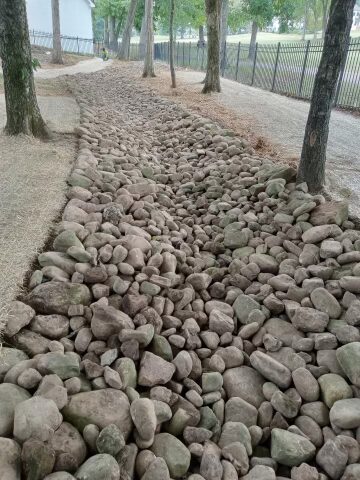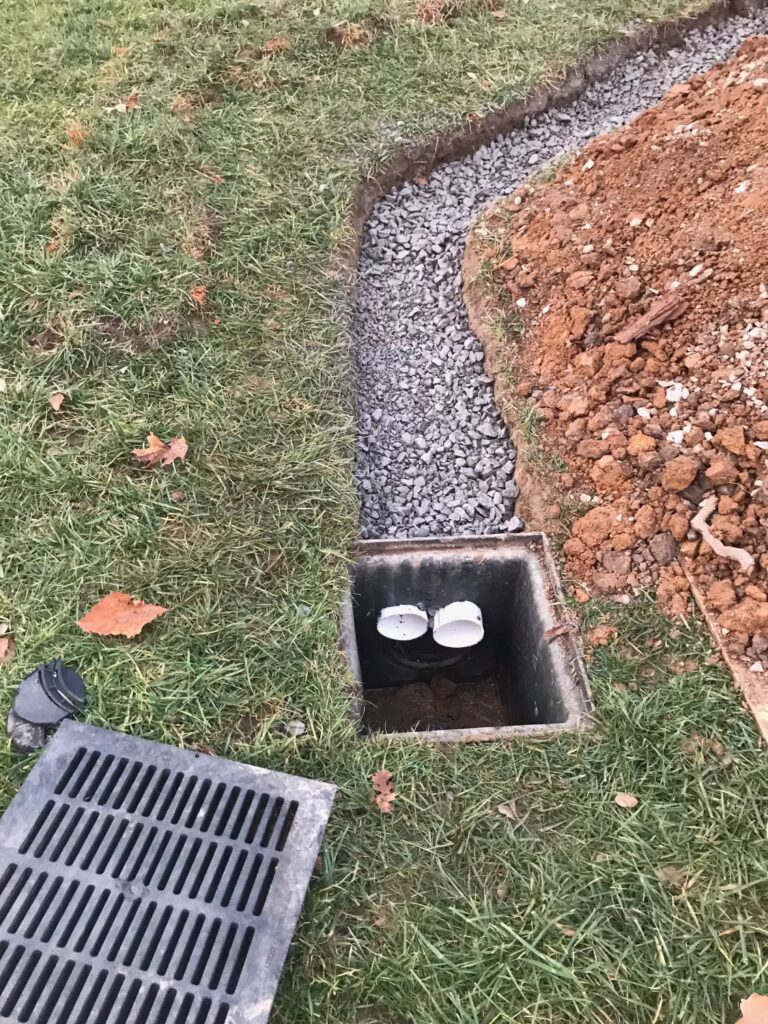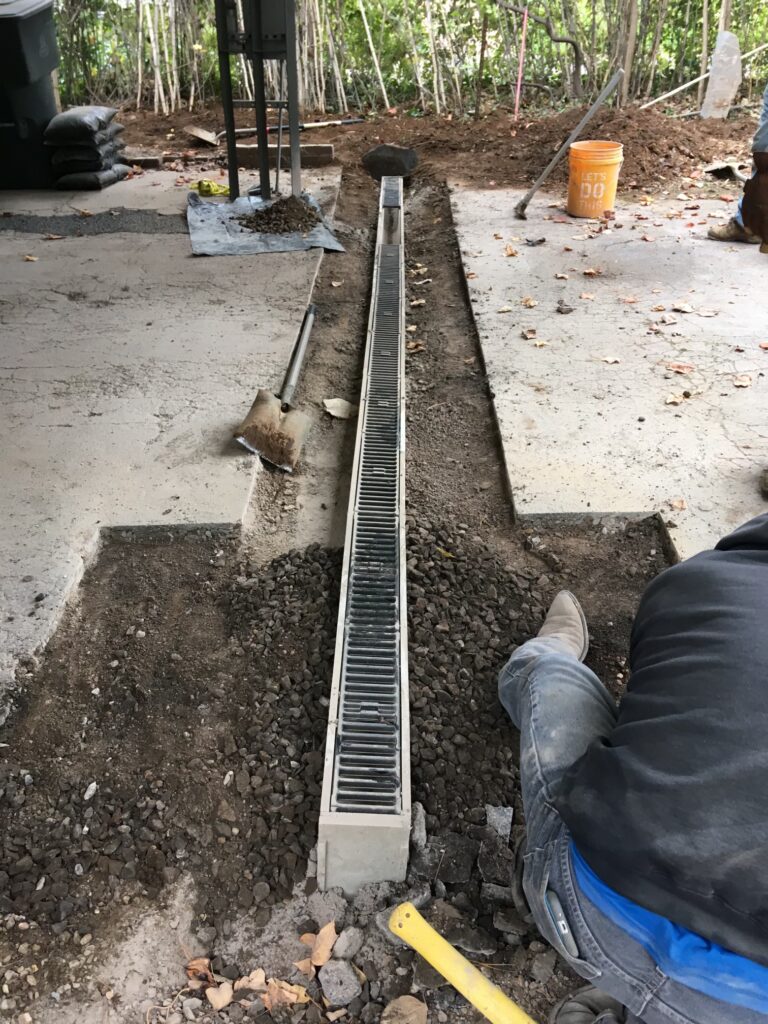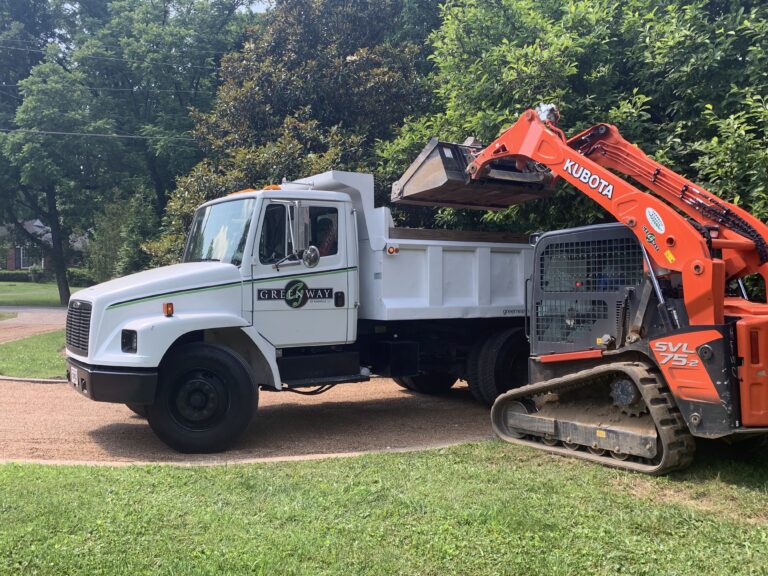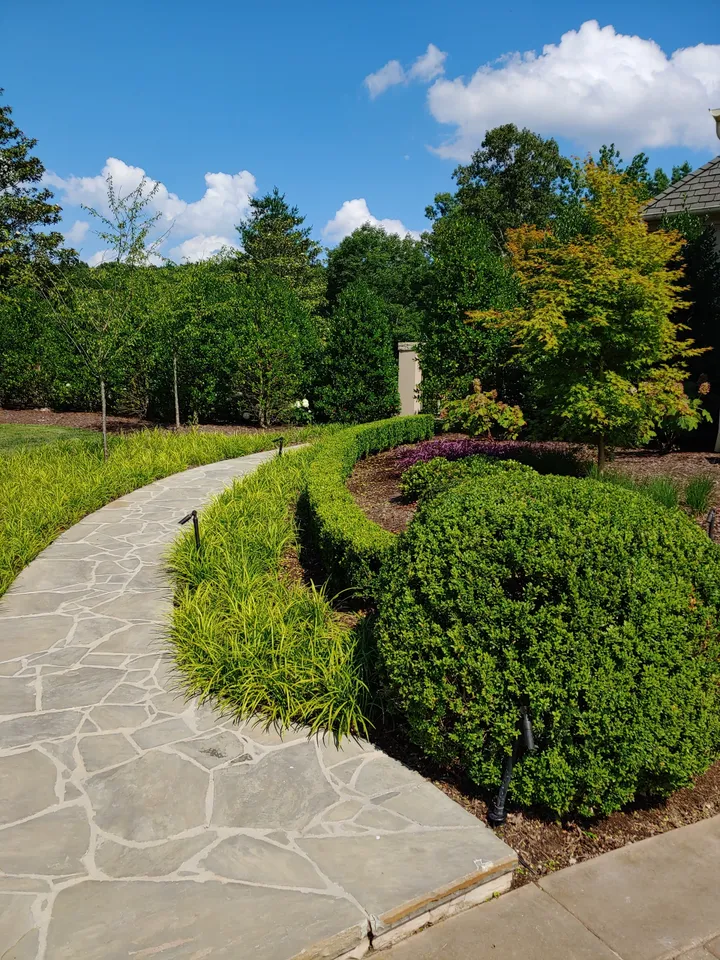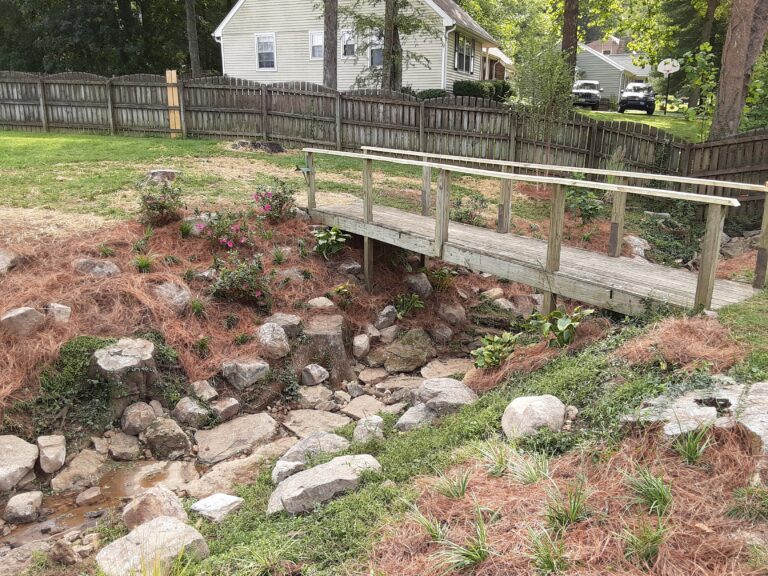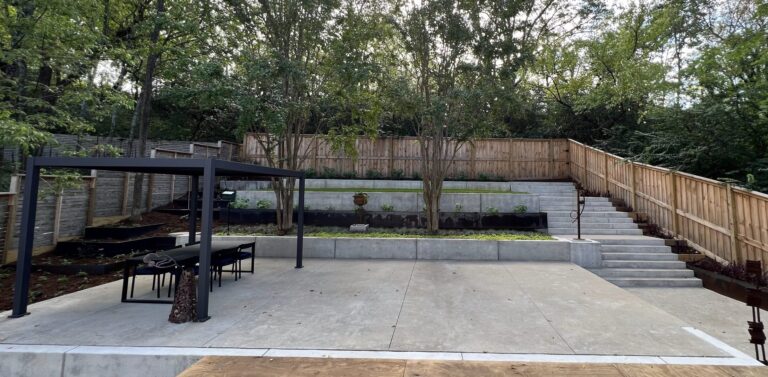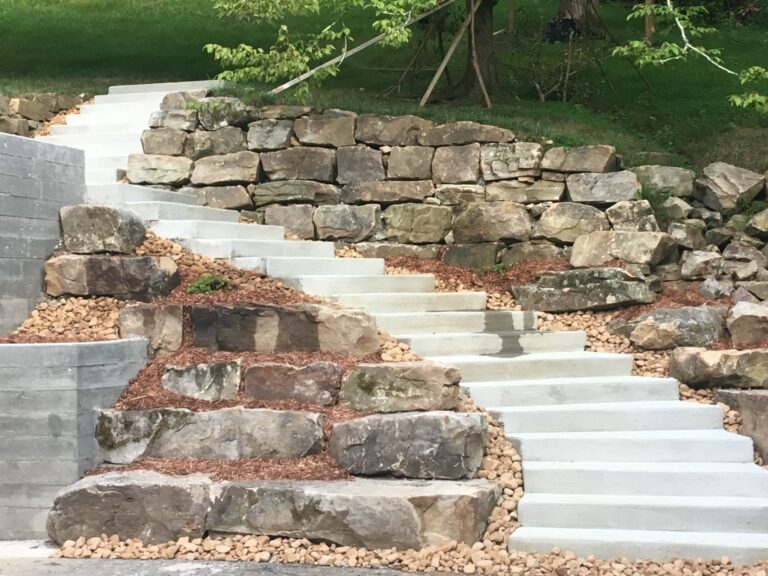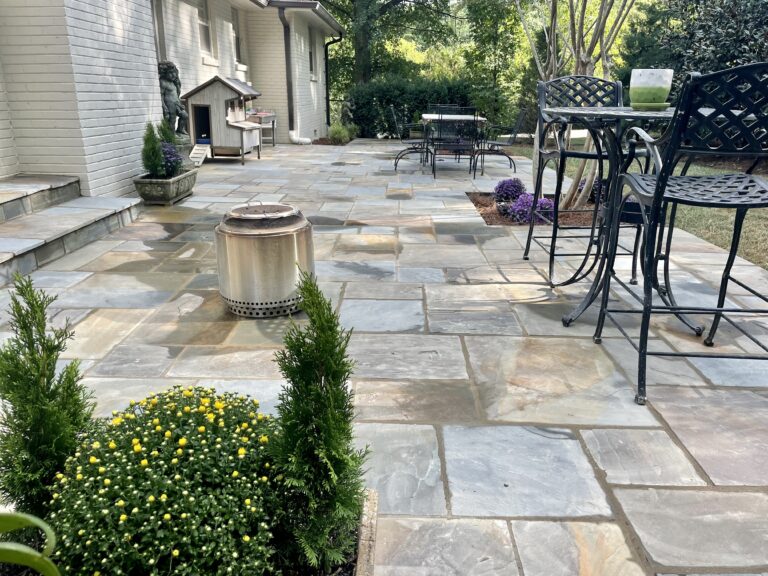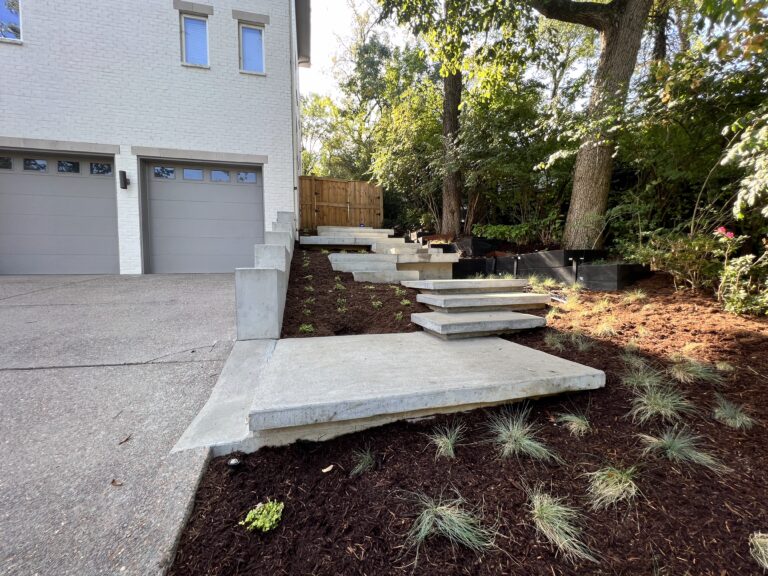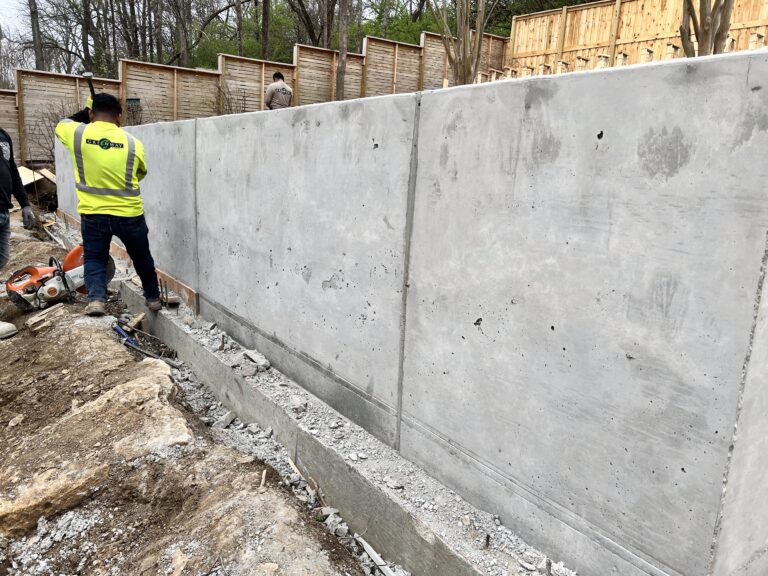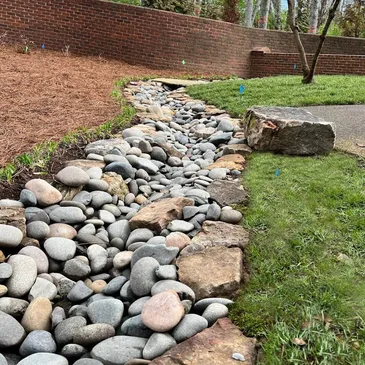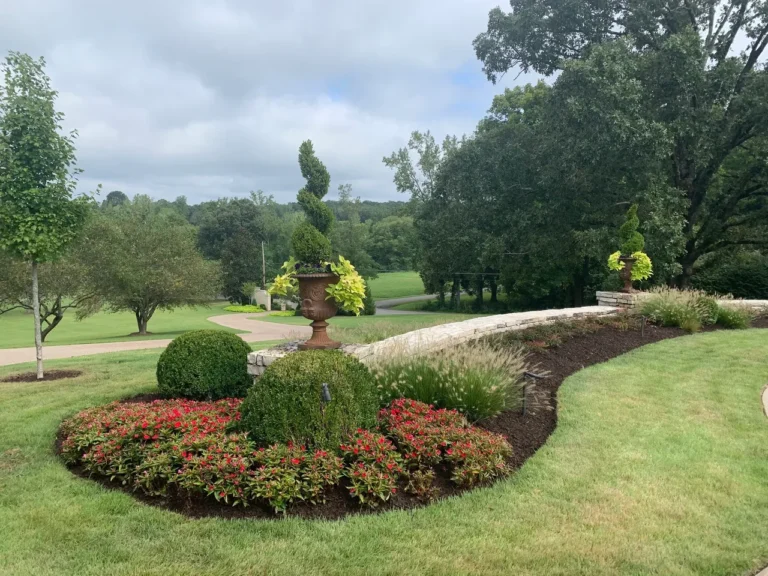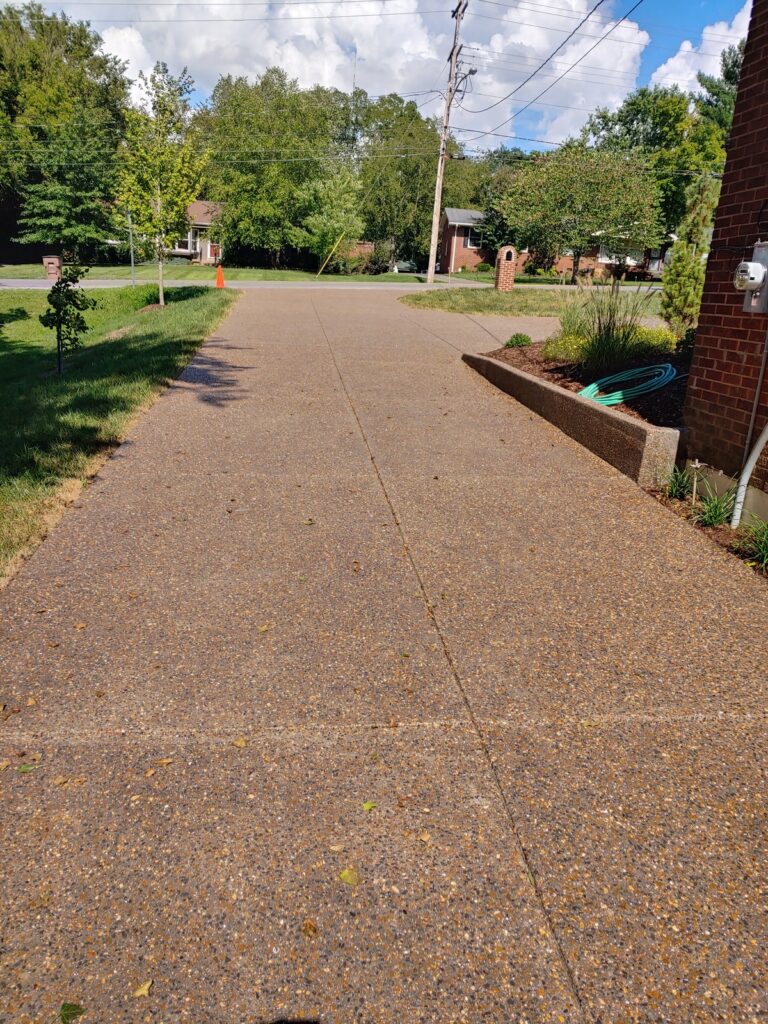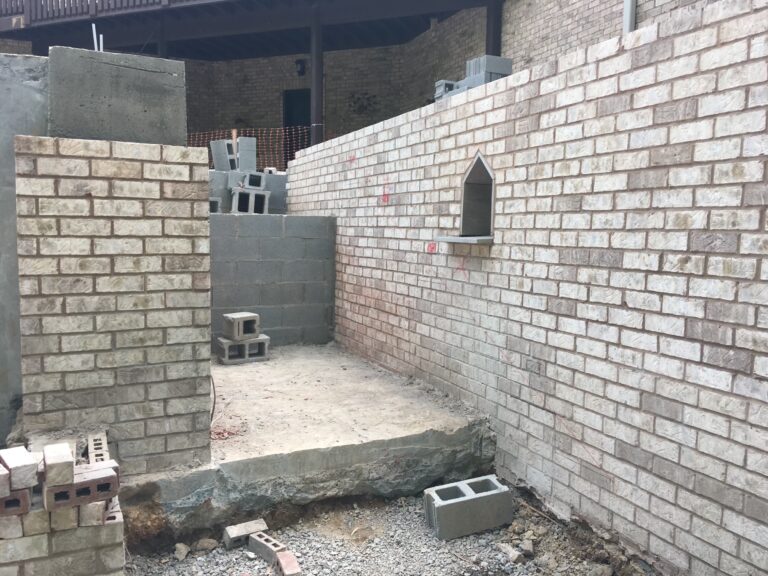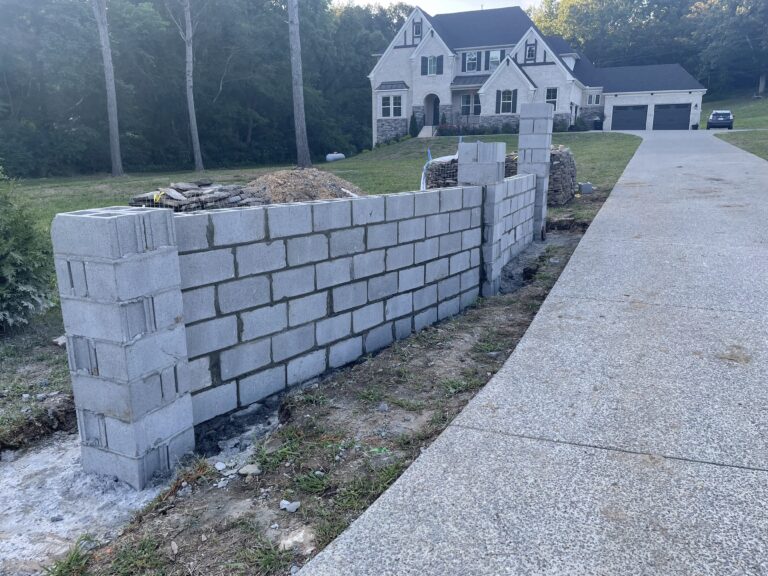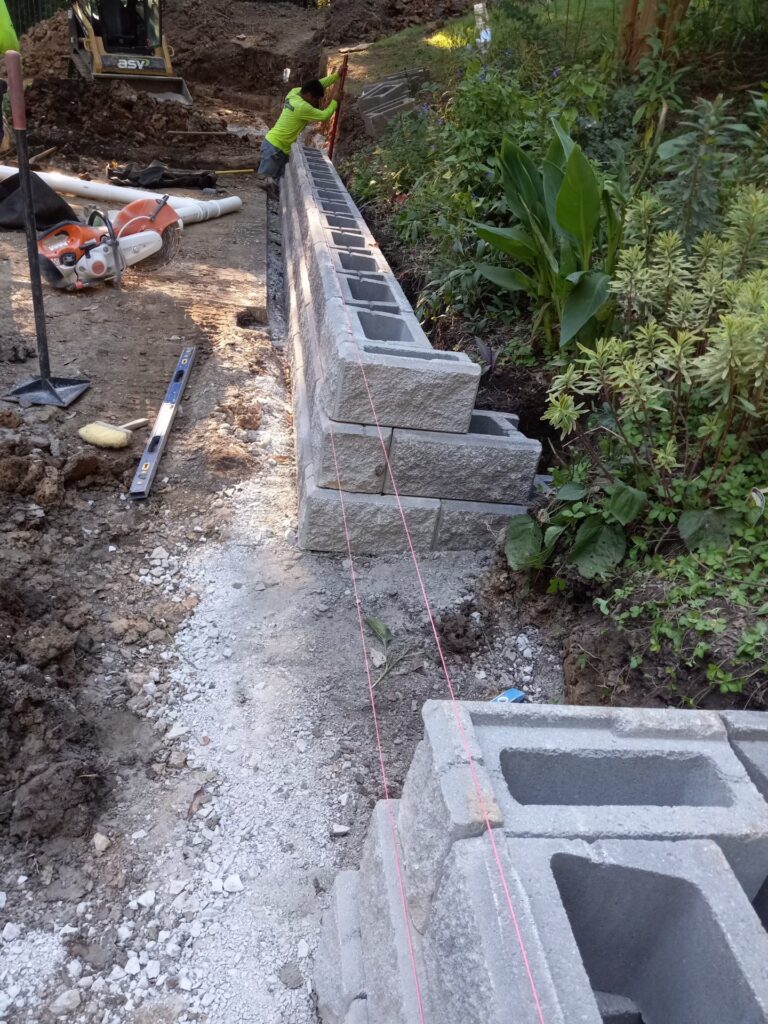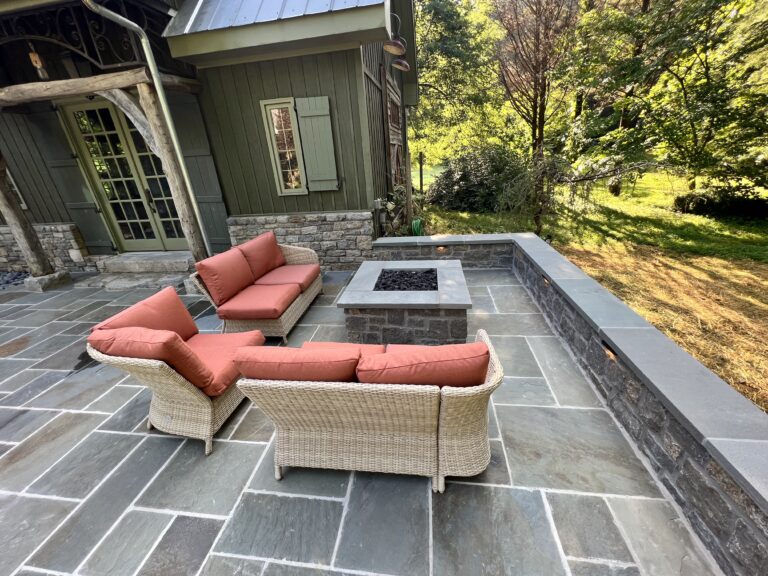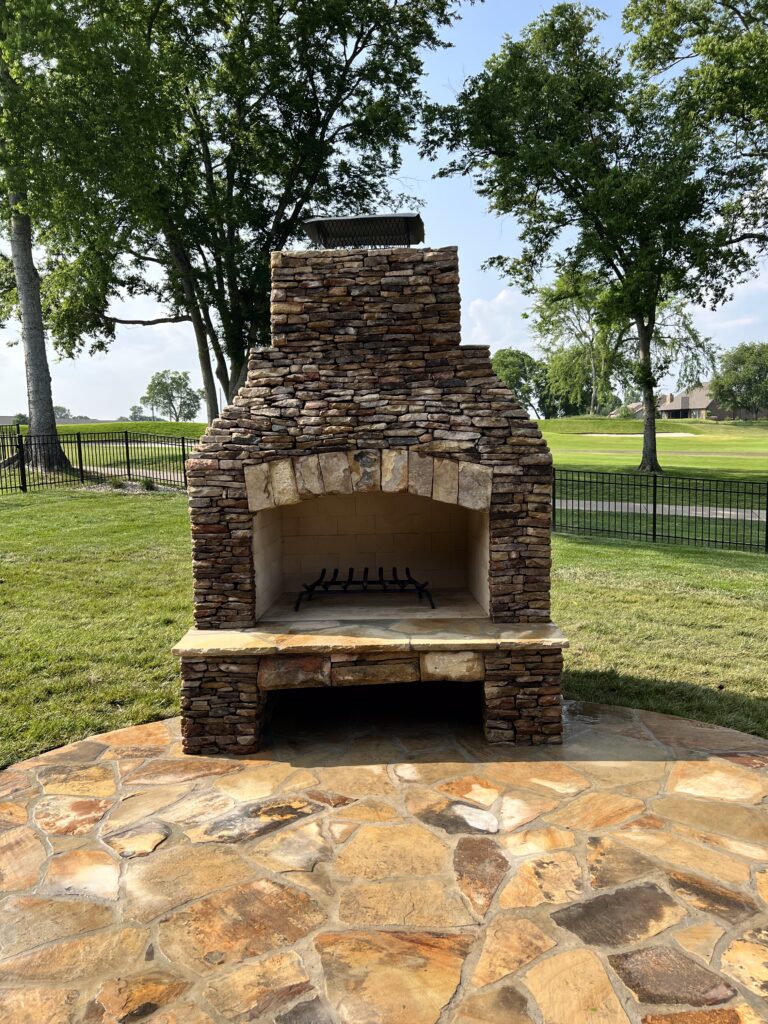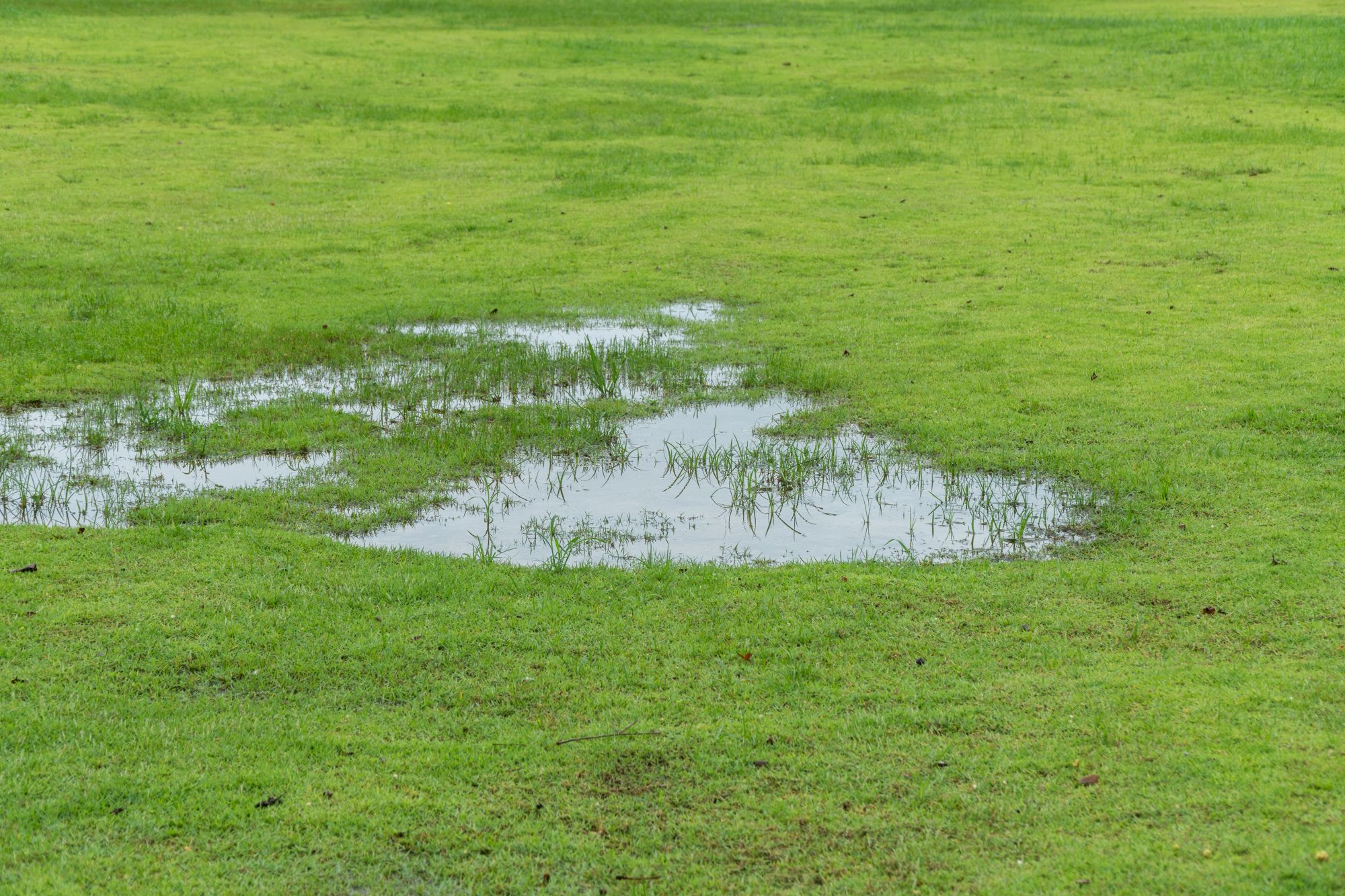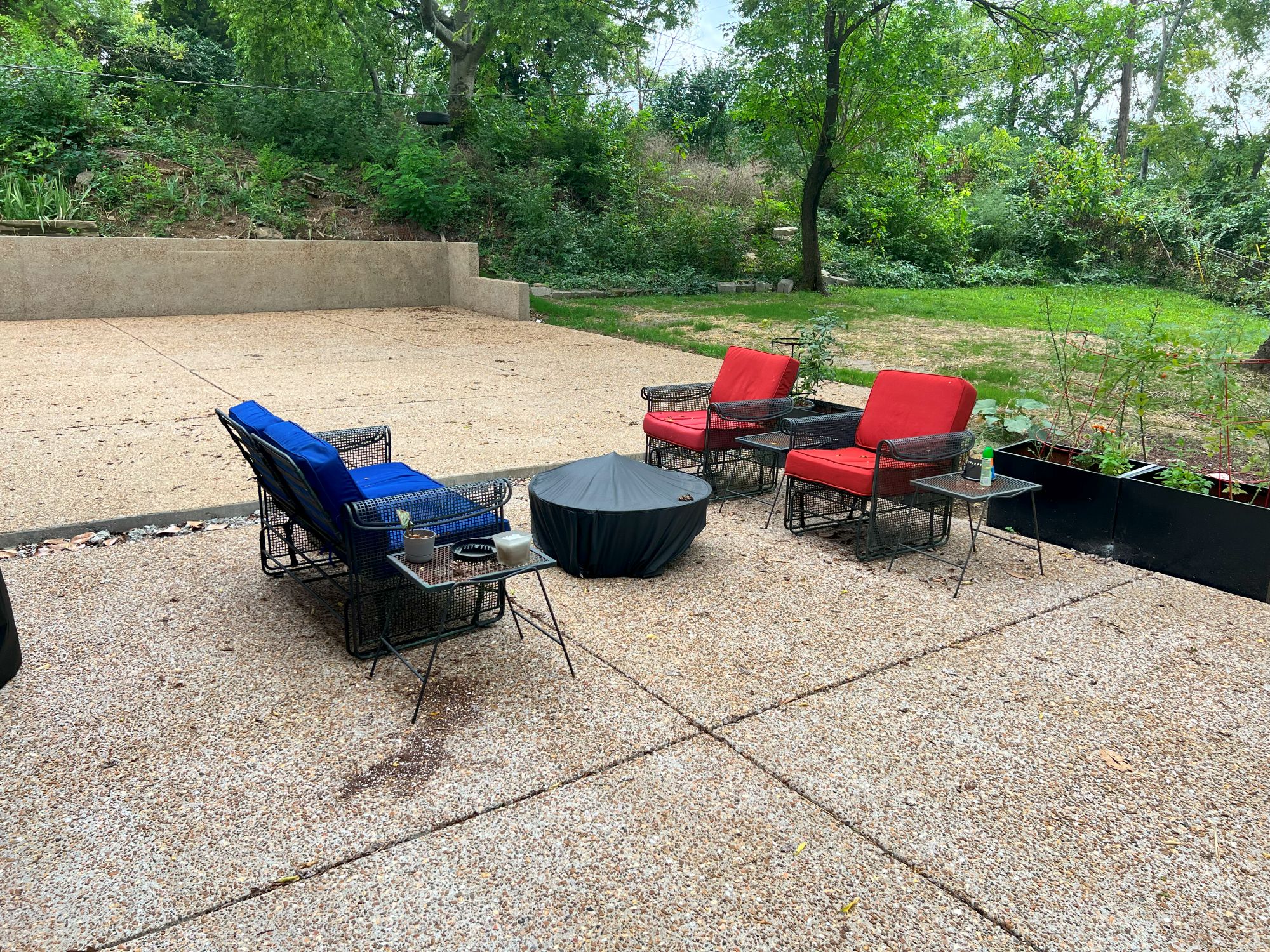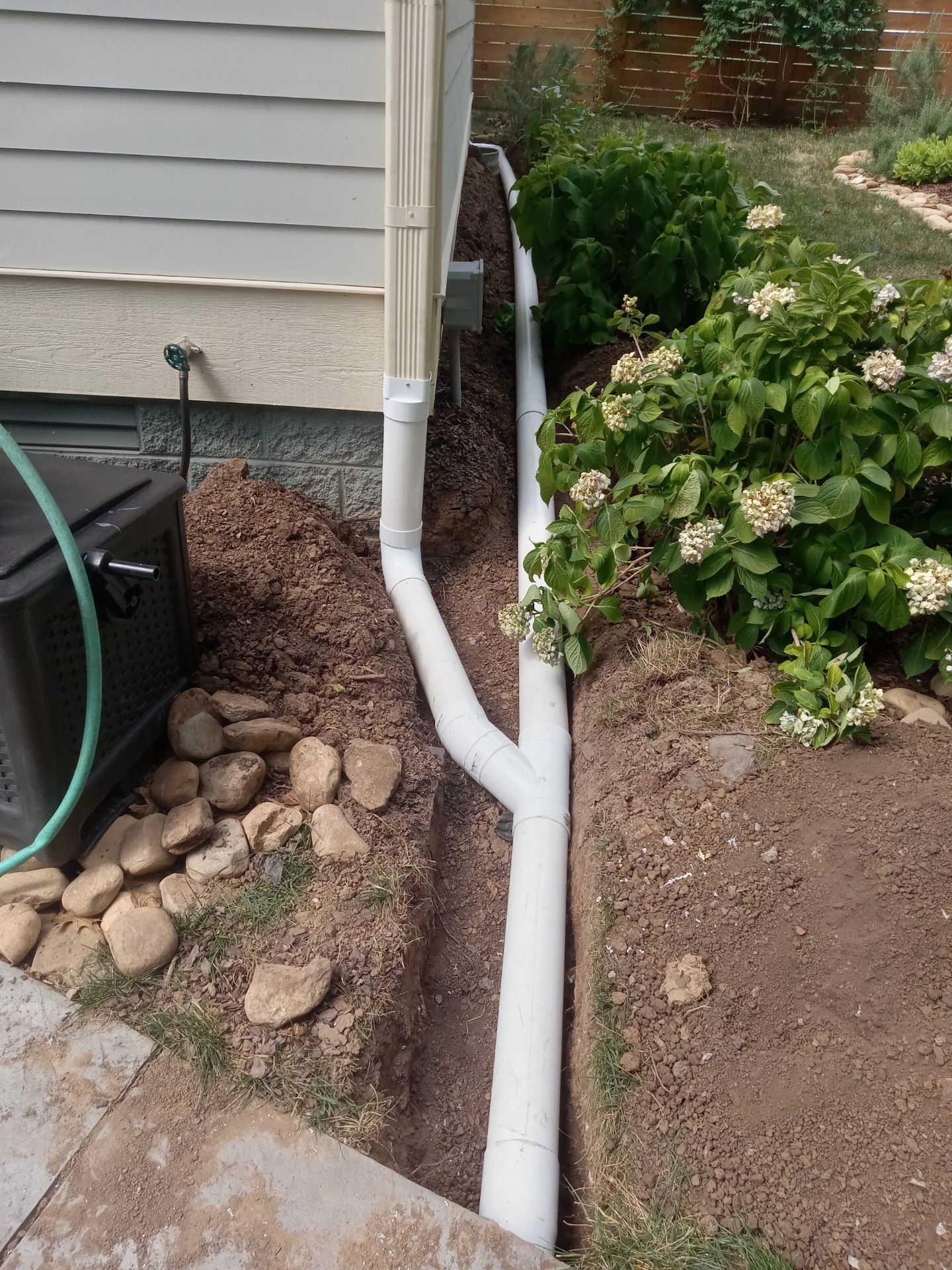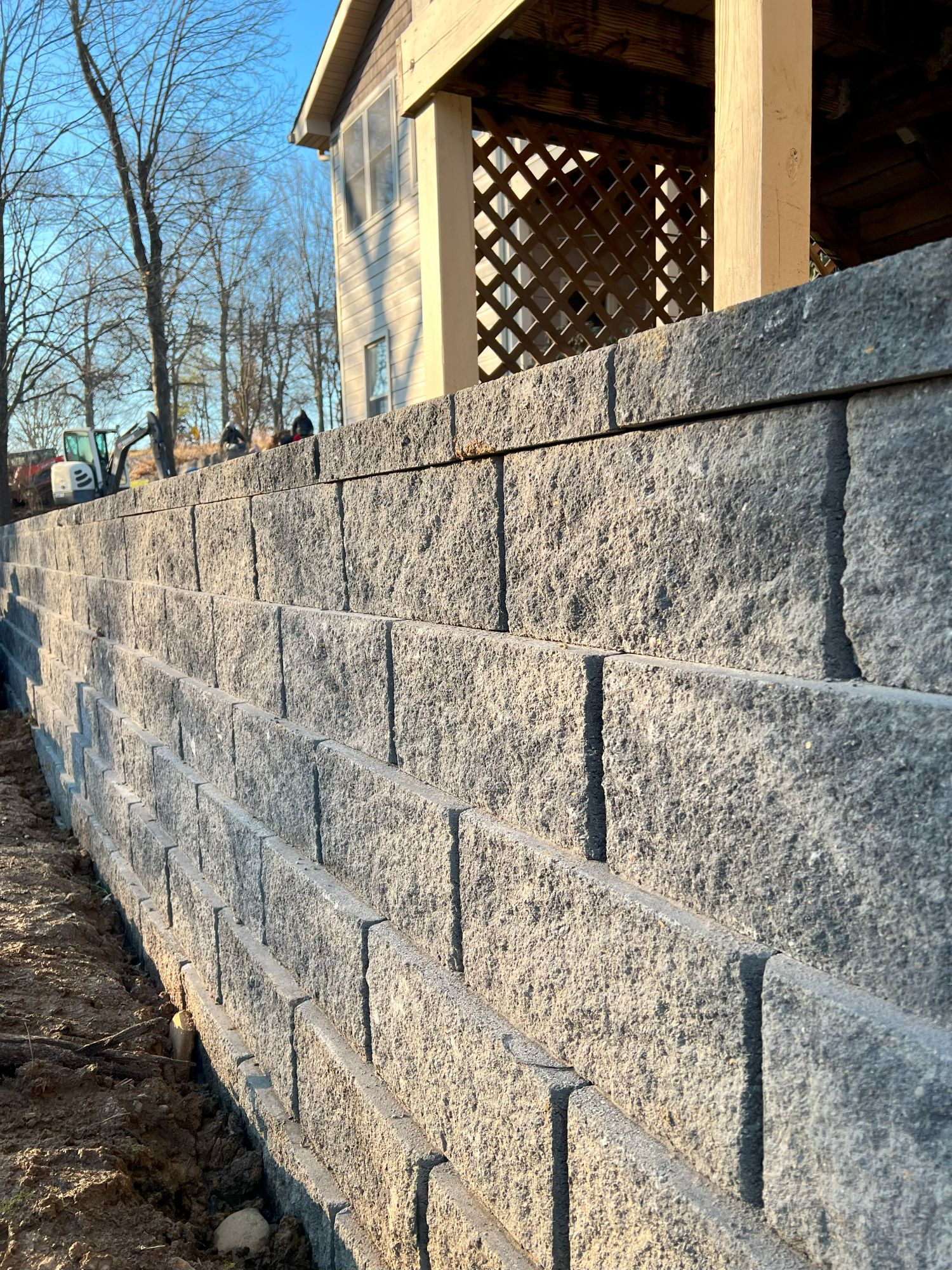A retaining wall serves a distinct purpose—keeping the ground in place. When there’s heavy rain or snowmelt, water travels in the direction gravity pulls it, and soil comes along for the ride. By constructing a retaining wall, you put a barrier in place to help the ground remain in its position instead of washing away and eventually turning a small slope into a massive angle. Building a retaining wall is a combination of science and art, requiring calculation to make it effective and safe, as well as skill to make it an attractive feature on your property. Whether or not a retaining wall is right for your yard—and how tall it should be—will hinge on a few factors we’ll discuss below.
What Factors Should You Consider When Deciding the Height of Your Retaining Wall?
The most important factor to think about when determining the height of a retaining wall is structural integrity and overall function. The wall needs to be tall enough that it meets the height of the existing ground. If it’s too low, soil will spill right over the top and defeat the purpose. Depending on the height, additional support will need to be built in to keep it secure. The taller the structure, the more reinforcement is necessary to hold up against weight and provide structural integrity. Just like a stack of toy blocks, eventually there’s a height at which the wall won’t be able to hold itself up, and it can come crashing down. The construction process must focus on creating thorough stability with each step so that the weight and pressure of the soil packed against it doesn’t push it over either. This is where having experienced eyes and hands involved in the project is crucial—if you don’t know how to properly reinforce the wall, there could be disastrous results.
A retaining wall has a very distinct visual presence in your yard; it’s hard to miss considering it’s several feet tall and long at the least. Something that is a focal point of your property should be physically attractive in addition to functional. When it comes to height, there are a couple of aesthetic options for a wall: a single taller structure or a series of shorter tiers of walls. The shorter tiers of walls are also called “terraces” and create a more visually interesting component to your yard than a single wall does. Each of the tiers is spaced back from the one below it, and that space can be planted with foliage to add an extra dimension to the yard. Materials also play a role in how attractive your retaining wall is. If you prefer the aesthetically pleasing look of interlocking stacked blocks, you’ll likely be able to skew taller in a single wall. A poured concrete retaining wall, on the other hand, is considered less attractive and is difficult to pour in exceeding height. Regardless of which material you choose, retaining wall blocks and poured concrete will both require significant planning and physical labor whether the wall is tall or short.
The height of a retaining wall will impact drainage in the area as well, since a taller wall will have increased hydrostatic pressure behind it due to a larger volume of soil. Any retaining wall four feet tall or higher should have a drainage system in place to give any water absorbed into the soil behind the structure somewhere to go, though shorter walls benefit from drainage too. Without some way for moisture to escape, the water increases the pressure behind the tall retaining wall and can lead to failure. Multi-tiered retaining walls will also need a drainage pipe installed below each wall, as there is still a large total height of ground being supported that will need to let off water properly.
As with any home improvement project, you should research any local codes or ordinances related to the task at hand. There may be restrictions or guidelines dictating the height and type of retaining walls that can be built in your area. Around the country, the maximum height of a retaining wall without a permit varies. For those living here in Nashville, Greenway is familiar with our local regulations and takes care of any permit processes for you if they’re applicable. It’s one more convenience of having a specialist take care of the work on your behalf.
The general rule of thumb is that a retaining wall shouldn’t be more than four feet in height, especially without proper stabilization and assessment of the ground. Different types of soil affect retaining walls in different ways—hard soil will provide a more secure base of support for a wall, but something that is prone to waterlogging or shifting like clay won’t be able to support a taller wall as well. It’s critical to work with a skilled contractor when building a retaining wall to ensure things don’t go awry, leaving you with a crumbled wall, lost time, and wasted money.
“Work with skilled Nashville hardscaping and outdoor construction professionals who understand your vision and respect your schedule. Contact us for a free quote!”
What Height Is Best for a Retaining Wall?
Calculating the right height for a retaining wall requires not just math skills but also experience. Considering all the factors when assessing what your home will need is important so that you can identify any risks or concerns and make plans to mitigate those potential issues. Without experience in building retaining walls, there are aspects to plan for you won’t know about. While the four-foot rule for height is a general understanding, situations vary, and some yards will be able to accommodate a taller retaining wall height while others might benefit from a series of tiers instead. A single wall provides simplicity—both visually and in the planning—but tiered walls create additional aesthetic interest as well as spread the work across a larger area. By distributing the load of the soil with the added surface area and levels that tiers provide. We have over a decade of retaining wall construction under our belt and can help you make the best decisions for your home.
No matter what height you need, Greenway of Nashville is your local expert in creating a beautiful, stable, and functional retaining wall that will withstand the seasons and years. A free consultation means we’ll come by your home, evaluate your needs, and provide you with a guaranteed quote to get your property protected. Contact us before winter sets in—submit a form on our website or call us at (615) 238-4574.
Read more content related to:
- What Does Landscaping for Drainage Look Like?
- Will Hardscape Installation Destroy My Lawn?

